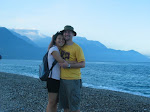Tuesday, 28 July 2009
Practical Information
Sunday, 7 June 2009
Food in Thessaloniki




Hi again
Wednesday, 20 May 2009
Hotels in Halkidiki

Hi again
Wednesday, 13 May 2009






Sorry for not updating the blog sooner!
Wednesday, 22 April 2009
Thessaloniki part 2-sightseeing (continued)

To finish the posts regarding sightseeing in Thessaloniki I will introduce you to the Upper Town (or Ano Poli in Greek ). This is the part of the city where I grew up and it's my favorite. This part of the city is totally different and is characterised by narrow streets, old houses and gardens. There are a lot of small squares where children play, people are just relaxing having a coffee. At some parts of Ano Poli there are tavernas with delicious food and traditional cafes, called 'kafenia'. You can easily get lost in the narrow street and you can catch some of the best views of the city. The Upper Town contains many of the city's most historical sights. The city walls and towers are intergral part of the Upper city and religious structures, like the Church of Osios David and Saint Aikaterini and the Vlatades Monastery worth the time to visit.
That is some of the sights that I would suggest to visit in Thessaloniki. I will post soon some more practical information about transportation in Thessaloniki and food (!!!!).
I found this article in the online version of New York Times about Thessaloniki. I think it's a more objective view than mine and can give you an idea about the city.
http://www.nytimes.com/1995/09/17/magazine/uncovering-history-layer-upon-layer-in-salonika.html
Wednesday, 15 April 2009
Thessaloniki-Part 2 Sightseeing (continued)
 I will continue a previous post for places you could visit in Thessaloniki.
I will continue a previous post for places you could visit in Thessaloniki. Sunday, 12 April 2009
The Parthenon

One of the world's most famous buildings, this temple was begun in 447 BC. It was designed by the architects Kallikrates and Iktinos, primarily to houe the 12m (40 ft) high statue of Athena Parthenons (Maiden), sculpted by Pheidias. Taking nine years to complete, the temple was dedicated to the goddess in 438 BC. Over the centuries, it has been used as a church, a mosque and an arsenal, and has suffered severe damage. Built as an expression of the glory of ancient Athens, it remains the city emblem to date.



